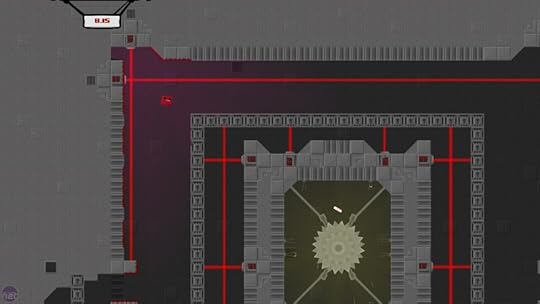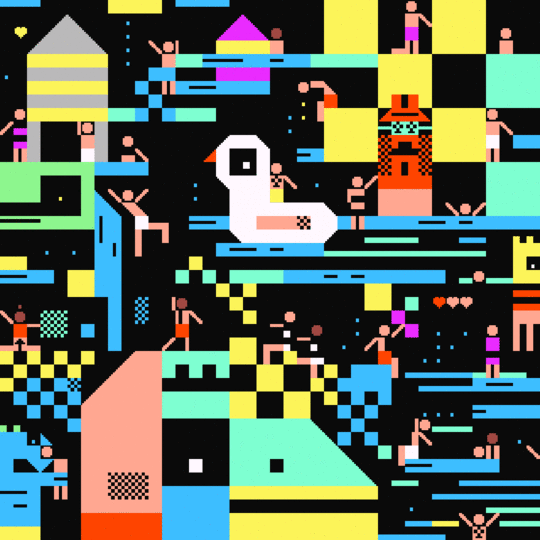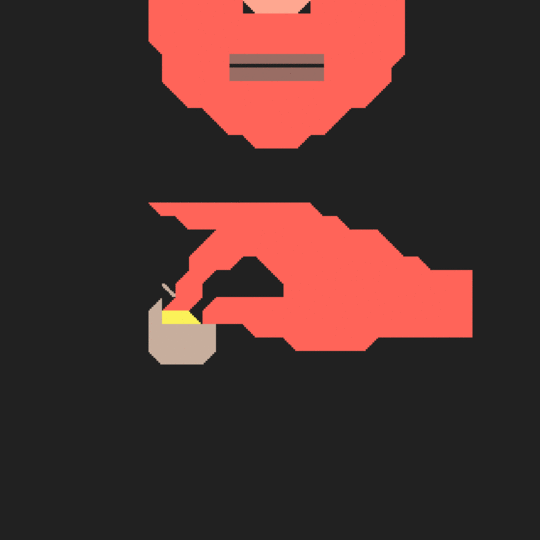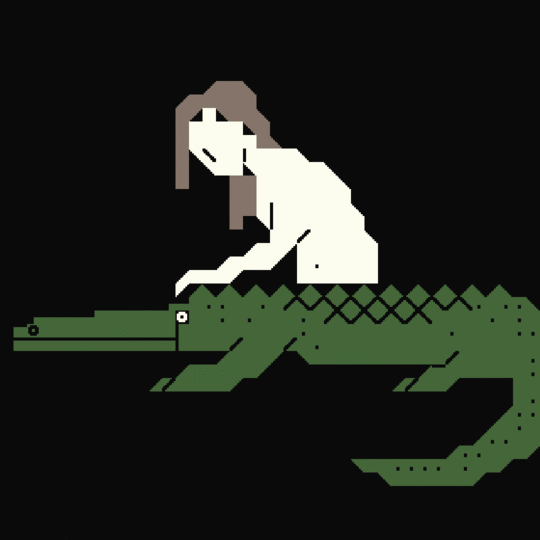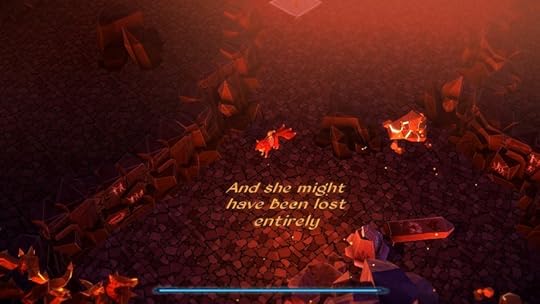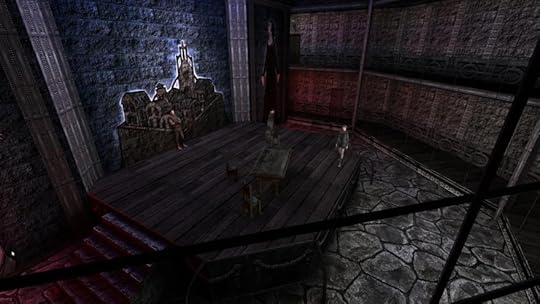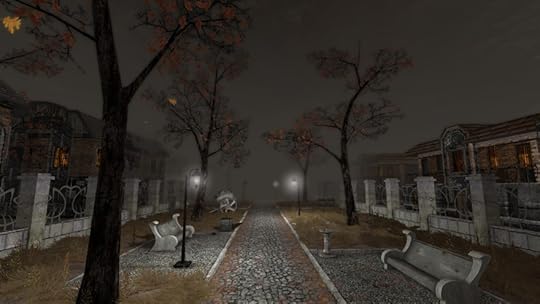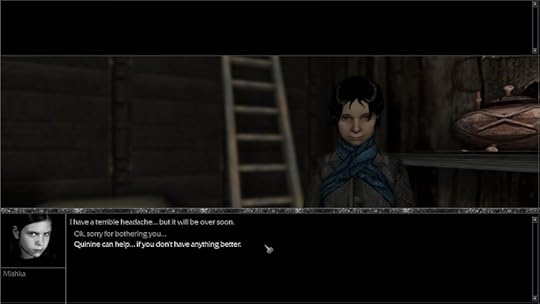Kill Screen Magazine's Blog, page 147
March 17, 2016
Meat Boy, Mario, and the perfect platformer jump
“What actions are ideal in a jump curve?” asked Playdead level designer Martin Fasterholdt to a sizeable crowd for his panel at the Game Developer’s Conference. In a discussion that stemmed from Fasterholdt’s own master thesis, the “You Say Jump, I Say How High?” panel explored the varying degrees of the best and most dynamic of 2D platforming jumps. His primary examples for the talk being the frenetic Super Meat Boy (2010), the classic Super Mario Bros. 3 (1988), and the precision-driven Limbo (2010) from Fasterholdt’s own Playdead (a game he claimed he was incidentally “too young” to work on at the time of its development).
What’s ideal in a jump depends on the context of the game itself
As Fasterholdt began his talk, he explained that jumps cannot happen without apt movement, an action to determine the jump. Meat Boy has no analog input, “he either runs or he doesn’t,” said Fasterholdt. Meat Boy’s a highly reactionary platform character. He brakes instantly, and can pivot at a moment’s notice. In contrast, Mario isn’t so floaty or easy to predict. Mario has weight to him, evident in his gradual slow to a stop when running. The boy from Limbo, suggests Fasterholdt, is perhaps the most complicated platformer character of all. The boy is entirely analog in his movements, as the player controls his every itch. When he runs, he grows faster with time. “It’s not so much an acceleration, as a transition,” explained Fasterholdt.
Jumps are the crux of movement in platformers. They are evasive maneuvers. They give the player the ability to traverse whatever’s in their path. Sometimes, well-landed jumps can even be a weapon to crush enemies under their own feet (such as the stomp in a Mario game). What’s ideal in a jump, however, depends on the context of the game itself.
For Super Meat Boy, Fasterholdt found its jump successful for the pace at which the game moves. “It’s a very symmetrical, reliable jump,” explained Fasterholdt, while also noting that gravity deaccelerates Meat Boy. With Mario, specifically in Super Mario Bros. 3, his speed directly relates to how high he jumps. Although, there’s also a variable thrown in. As Mario runs, there’s tension before leaping off the edge of a gap. This tension is unpredictable, and relies heavily on ultra-precise timing. While Mario’s jump is always at an upward curve, it is not symmetrical as Meat Boy’s. Limbo’s boy protagonist is the most dynamic of the three, according to Fasterholdt’s intense research. With its analog controls, the boy’s movements are entirely reliant on the player’s diligence, and can even face penalties. With less speed and slight air friction, Limbo’s jumping is the least extraordinary of the whole bunch, or as Fasterholdt said, “it’s quite close to the real world.”
2D platformers bend the basic mechanics of the ‘jump’ time and time again to better suit the context of their game. When we, as people, jump, we don’t bounce around in an effortless manner like Meat Boy, just as we don’t soar far distances like Mario’s well-timed leaps of faith. But we do clumsily clamber over high ledges and hop short distances as the boy in Limbo does, and perhaps that’s why Fasterholdt’s comparison of the three is so noteworthy. These three games are similar in genre only, and differ in the most drastic of ways—even when just narrowing it down into something as ‘simple’ as a jump.
Check out our ongoing coverage of GDC 2016 here.
AlphaGo’s win is a victory for humans, not machines
Google’s stream of the 5-game Go series between DeepMind’s AlphaGo and Lee Sedol was odd. It put little vector-graphic landmarks from Seoul opposite little vector-graphic landmarks from London. But I never once heard it suggested that this was a battle between Korea and the UK. Maybe it would have been more appropriate to put a brain on one side and a processor on the other, but that’s equally inaccurate. It may not seem it at first, but AlphaGo and its victory represents human effort and human progress. While we still have “the machines” under control, they are tools for our own advancement.
Not only was AlphaGo programmed, tested, and assisted by a team of humans, the games of Go it studied are our games. Demis Hassabis, DeepMind co-founder (and former AI programmer at recently dissolved Lionhead Studios), explained after the fourth game that none of the games AlphaGo had learned from were Lee’s—they were all “strong amateur games from online servers.” The machine needed “tens of millions” of games to form the knowledge base it would extrapolate on, and while I wouldn’t call myself a strong amateur, I might know one or two people whose games AlphaGo has studied.
One of the reasons the Google DeepMind team set up the series between AlphaGo and Lee Sedol was because they were hoping their AI would lose. They weren’t “rooting” for the other side, but they didn’t have a handle on just how strong AlphaGo was, and only by playing against the best of the best could they determine where the program’s weaknesses were. After Game 2, Lee Sedol said he couldn’t find any weaknesses either, but that night, he and several other high-level players stayed up studying its moves and mistakes until the wee hours of the morning. He did lose the third game, but eventually the complex amashi strategy he tried in game four gained him a win. The fifth game saw him try something similar and struggle to stay ahead of AlphaGo, which pulled ahead in the end.
“we’ll be seeing it play moves that are new to human professionals”
Professional Go player Michael Redmond said that to call Lee’s 4-1 defeat the “end of Go” is wrongheaded: humans will always find it compelling to use the game to intellectually challenge themselves and others, and this series has led more people to pay attention to Go than anything else in the last half century. Said Redmond, “As far as the game itself is concerned, I truly believe that if AlphaGo continues to improve… we’ll be seeing it play moves that are new to human professionals, and people will imitate or emulate it.”
As the Go world changes, and the AlphaGo team figures out how to train their AI to avoid making some of the mistakes seen in the series, DeepMind will begin to collaborate with the UK’s National Health Service. Hassabis says they’ll start with fixing a lot of the old NHS software before moving onto bringing in machine learning techniques, but maybe eventually, DeepMind’s organization of our healthcare data will lead to discoveries we couldn’t make, hitting peaks we couldn’t reach alone.
Beautiful drone photos depict the warped cityscapes of our future
Photography has always possessed this peculiar quality of contorting a space as well as documenting it. For instance, take motion photography, which captures the momentum of a moving object in a static image while often at the same time distilling the background into a blur of bokeh and light trails. Or tilt-shift photography, where the selective focus of a frame reduces the enormous minutiae of daily human life into a diorama of dramas. Filmmaker and photographer Aydin Büyüktas’ Flatland series, named after Edwin Abbott’s multi-dimensional novella, shapes the world of its subjects while at the same time revealing them.
multifaceted dreamspaces
Compiling a smattering of drone photos, Büyüktas stitches them together to create spatially dense overhead photographs of the cities of Turkey. The result echoes the reality-bending illusions of M.C. Escher and Christopher Nolan’s Inception (2010). In his own words, Büyüktas describes Flatland as a body of work that “aims to leave the viewer alone with a surprising visuality [that is as] ironic as it is multidimensional in its romantic point of view.” But aside from multifaceted dreamspaces, Flatland shares an uncanny likeness to the ‘Stanford torus’ domestic colonies conceptualized by NASA in the mid-seventies.
Commissioned in the summer of 1975 in conjunction with a NASA-helmed symposium with Stanford University, the concept art for the donut-shaped city ships were inspired by the ideas and theories of aerospace engineers Wernher von Braun and Herman Potočnik. It shouldn’t surprise you that their concepts also inspired the visual language of some of the most iconic stories of science fiction—2001: A Space Odyssey (1968), Elysium (2013), and Mobile Suit Gundam (1980). Not to mention the torus’ obvious descendants in the space of interactive fiction, its impossible ascending planes informing the shape of the labyrinthine dimensions of the Citadel from Mass Effect (2007), and Halo’s (2001) titular ring-shaped menageries turned weapons of mass destruction.
Büyüktas’s work invokes all these comparisons and more, pulling from the greatest defining qualities of photography and imbuing them with that adventurous spirit to reshape our understanding of the world as readily as we perceive it.
You can see the full Flatland series over on Büyüktas’s website.
h/t Colossal
All images created by and belong to Aydin Büyüktas.
Rhythm hell game Thumper aspires to be a VR fever dream
The term “rhythm game” might call to mind images of a virtual band either slaying or bombing in front of a crowd. Usually, you’re cast as a musician strumming a fake guitar or a fake drum kit to the demands of a note highway, songs turned into timely button presses. Thumper throws all that shit out the window.
You play as a beetle who lives, breathes, and literally is metal. You are tasked with making the right moves as you try to survive the endless road to hell stretched out before you.”When you think of Rock Band or Guitar Hero, they’re trying to recreate this euphoria of commanding a crowd and appreciating your performance,” says one part of the two-man team behind the game, Brian Gibson. “But to me the best feeling is getting lost in it, being transported somewhere else, somewhere psychedelic and abstract.”
Thumper‘s abstract aspirations run all the way down to its musical influences as well. Aside from the obvious—Gibson is the bassist for kaleidoscopic noise metal duo Lightning Bolt—he also took to the often dissonant, uniquely un-melodic soundtracks for Stanley Kubrick’s 2001: A Space Odyssey (1968) and The Shining (1980).
In a sense, Thumper doesn’t even really cast you as the musician or artist. You are the instrument itself, receiving and embodying a beat as it strikes you instead of playing it. The game originally sprang from the concept of doing a single action and a turn, then transforming those into a recreation of a drum beat. “Basically, your button press is like hitting a bass drum and the turn is like hitting the snare,” Gibson explains.
crossed the line from a game grasping at abstractness and into an all-out fever dream
Oh, and there’s one other thing that makes Thumper different from other rhythm games: its neon road to hell can be strapped to your fucking face.
With the recent port to PlayStation VR, Thumper crossed the line from a game grasping at abstractness and into an all-out fever dream. “That’s VR experience to aspire to, isn’t it? The fever dream,” Gibson muses. “Where you take off the gear, wake up, and can’t even describe it to someone else. It creates such a totally different order of logic from the real world that you can’t even make sense of it. I don’t think our game is there, but…”
But indeed.
From Gibson’s perspective, though, VR could spell out a revolutionary change in rhythm games. Previously, rhythm games were always tethered to the two-dimensional approach. It makes for a pretty superficial spatial relationship, forcing creators to use abstract concepts that ask you to perform an action whenever a horizontal axis crosses with a vertical axis. “Rhythm games had to actually make an area in space represent a location in time,” Gibson explains.
But VR forgoes the limitation of the flat screen, replacing abstractness with something much more visceral. “Spatial information is real information,” Gibson says. “And since VR uses stereo vision, it gives you so much more to work with,” Gibson says.
You can follow Thumper’s development and eventual release by visiting the website. Check out our ongoing coverage of GDC 2016 here.
8-bit artist makes new autobiographical GIF every day
This article contains flashing images.
///
Speaking to Vice’s The Creator’s Project, Italy-born, Shanghai-based illustrator Ailadi says “I like the combination of PETSCII 8-bit game aesthetic with subjects of common daily life.” She’s referring to her PETSCII series, an art project based around producing one new 8-bit gif per day, fittingly named after the character set from the line of 8-bit home computers Commodore produced in the ‘70s. “I mostly draw at night, just before going to sleep,” she tells Vice. “And the subject of it represents something about the day that just passed: something I did, I saw, that happened around me or in the news.”
“I mostly draw at night, just before going to sleep”
This basis in reality doesn’t stop the gifs from having a slight surreal touch, however. “Perhaps it’s the 8-bit medium stirring nostalgia, but Ailadi’s often whimsical GIFs seem to take place in a slightly different world,” notes Vice’s Gabrielle Bruney. “A gentler, more amusing one, where a girl can pet an alligator seemingly without fear.” According to the interview, the project is being made in collaboration with 8-bit enthusiast Jamonbill, who Ailadi explains is behind the program she uses to draw and animate her gifs. As the program improves, she’s excited “to keep evolving and imagining new way [sic] of ‘petsciing’.”
Check out some of Ailadi’s gifs below. Damn if that alligator isn’t cute.
For more, you can follow Ailadi on Instagram, and read the full interview over on The Creator’s Project.
Cure writer’s block in the origami world of Epistory
There’s something perpetually charming about tangible crafts in videogames. Whether it’s the hand-made wool in the iOS space-travelling title Voyager (2012), or the ever-customizable papercraft charm of Tearaway (2013), crafts-turned-aesthetic in games always adds an extra layer of tangibility to an otherwise digital experience. In Fishing Cactus’ typing adventure game Epistory, the paper-crafted world itself unfolds as you venture through the game, much like origami itself.
The story literally unfolds from the paper itself
“It just makes sense,” said Laurent Grumiaux, Commercial Director of Fishing Cactus, about the game’s palpable nature. As a wordsmith suffering from writer’s block, the player turns to their mind’s muse. “He wants his flow back,” affirmed Grumiaux. As a writer, the player interacts with the world entirely with their keyboard. The player is tasked with the ability to write out entire sentences, or even just brief phrases, whatever helps to unravel more of the central story (which quite literally unfolds from the paper itself).
Alongside its visually striking approach to origami, Epistory’s playable entity hopes to spur up a connection with players. “There’s duality with it,” said Grumiaux. “Such as, do I play as the fox, or does the girl lead the way?” The fox, perhaps better referenced as a “kitsune” (the Japanese term for foxes), is peculiar in the game. The kitsune has not one tail, but three, and towers compared to the small girl that rides it. The kitsune itself can be seen in origin as tying into the game’s Japanese-leaning artistic style, as kitsunes are prominent in even the oldest of Japanese folklore and art. “Also foxes are smart,” justified Grumiaux, of worldly perceptions of the foxes as a species.
The origami art style of Epistory originally evolved from a different sort of game: one developed for a client of Fishing Cactus. “We wanted to go deeper,” said Grumiaux. The developers then began many iterations using the art style, until one idea stuck. It’s befitting then that Epistory’s name falls from epistolary. Not quite a grandiose letter-writing novel, the game simply exists comfortably as an interactive act of epistolary: with the player progressing by writing letters to himself in the game.
Epistory has been on Steam Early Access since September 2015, but soon has an official release date of March 30 of the entire game . Check out our ongoing coverage of GDC 2016 here.
Mobile game puts you at the frontline of the Spanish eviction crisis
Housing is both a practical necessity—humans have to live somewhere—and a statement of values. Relationships to housing vary by country; whereas some place an emphasis on ownership, others accept long-term renting. In this respect, housing policy mixes practical, political, and (yes) moral considerations.
Consider Spain. In 1957, Franco’s Minister for Housing, José Luis Arrese declared, “we want a country of proprietors, not proletarians.” Housing, as ever, is a statement of values as much as it is a practical necessity. The former, however, comes to influence the latter; Spain, as Isidro López and Emmanuel Rodríguez note, had notably higher home ownership than Britain even during the heights of Thatcherism.
The win condition here looks a lot more like a draw
This fixation of ownership, as a state-sanctioned policy and value proposition, continued in the early days of the Eurozone, when families were encouraged to buy properties and sign mortgages whose terms were only tolerable so long as the cash kept rolling in. You can probably see where this story is going. Initially buoyed by access to the Eurozone’s lower interest rates, Spain’s housing market boomed. Then it didn’t. Spanish house prices fell 26 percent between the end of 2006 and 2011.

All of this history lives in Antoni Besalu’s Stop Evictions, an iOS and Android game that tries to cram the history of Spain’s housing crisis and the Platform for People Affected by Mortgages (PAH) movement into a bite-sized package. It starts with a family buying a house. They act prudently, taking the advice of the government, which favors ownership over renting. They look at the contract, which obscures the particular risks of this mortgage: the family will be on the hook for money owed in the mortgage even after foreclosure. They sign the contract, because it seems like a good idea at the time. That particular time doesn’t last. Of course it doesn’t.
That’s where Stop Evictions switches from a story with only the illusion of choice to a game putting you in the shoes of PAH activists. The family is about to get evicted. Policemen and bankers are coming for their home. The clock is ticking, and eviction looms closer. At first, there is only one activist. You direct that activist to confront the oncoming banker. More bankers and policemen come. You call as many activists as possible and direct them to these new invaders. Run out the clock and the family gets to keep their home. The win condition here looks a lot more like a draw, but the family will take it.
The particular risks of Spanish mortgage law highlighted in the game deserves more play
Stop Evictions’ model of social change is relatively simple: If enough concerned citizens stand up in the streets, the forces of rapacious capitalism will back down. While this is a stylized presentation of facts, it is not entirely removed from PAH’s actual approach to Spain’s current eviction crisis. PAH has organized meetings of people affected by evictions and has also sought to convince state and government actors to lessen or forgive debt burdens. (The organization has no official partisan affiliation. One of its founders, Ada Colau, was elected mayor of Barcelona last year after stepping down to run in the election.) Would that it were so simple.
Stop Evictions admirably shows the stakes and factors in Spain’s eviction crisis, but it is rather bullish on the prospects of collective action. With each success, you can call more people, and they will come. While PAH’s influence is considerable, this mechanical rendering doesn’t include the structural barriers that movements must reckon with to reproduce this phenomenon at scale. As with most games about social movements, Stop Evictions makes more sense if you don’t extrapolate its scenes to explain how activism works at a societal level. That there are always more agents of the state or banks coming over the horizon, on the other hand, feels broadly plausible.
To its credit, however, Stop Evictions succeeds in elucidating the specific context of the Spanish housing crisis and the eviction crisis that followed. Its storytelling effectively encapsulates the risks of policies that encourage buying above all else. The particular risks of Spanish mortgage law highlighted in the game—that even after your house, which is likely your main asset seized if you are still on the hook for mortgage payments—deserves more play. PAH may or may not be the solution to these problems, but Stop Evictions more effectively rallies support through its dramatization of the problem than its gamification of the prospective solution.
Change is hopefully afoot in the Spanish housing market. A 2015 Amnesty International report noted that public housing represents only 1.1 percent of Spain’s housing stock. In Sweden, for instance, that figure is nearly 20 percent. Moreover, Spain has recently been found to be lacking in urban rental properties. These are the downsides of a housing market built around a fetish for ownership and selling vacation properties. The sort of activism depicted in Stop Evictions is a necessary corrective to the extremely punitive nature of Spanish mortgage laws, but the game hints at far more wide-ranging changes being needed to achieve a just and inclusive housing market.
Pathologic and the disease of language
Boredom is usually considered to be the death of a game. You play, you get bored, you switch off. Popular thought demands that videogames be engaging at all times, whether through direct action or intellectual thrill. It matters less as to how it’s achieved as long as boredom is avoided. But Pathologic, a game by Ice-Pick Lodge released in 2005 but re-released in HD last year, goes against this thinking—it forces its players to get bored and for good reason.
Pathologic is a game about an epidemic. However, it does not follow the clichéd narrative of a crisis revealing the most extreme aspects of human nature. On the contrary, this crisis reveals the void lying at the very core of human existence. The means of unearthing this void is a tedium that is felt at all levels of the experience. The game does not tell a story about boredom accompanied by engaging challenges and goals. Nor does it tell an epic story of great exploits while the player has nothing to do. It uses boredom consistently and consciously.
the crisis reveals the void lying at the very core of human existence
The first void is the one through which we experience the game world, the void of the avatar. I observe the world from the first-person perspective, and at no point can I actually see my virtual body as all the mirrors in the game are broken. This simple fact has one serious consequence. If I don’t see my body then how can I be sure of who I am? I can’t. However, I can reason that I am myself, because other people address me as if I am myself—outside of this, when there is nobody to affirm my identity in the game, I basically have no identity. But what if they tell me I am somebody else, two people at the same time or, even worse, simply nobody? My lack of identity is exposed in this possibility and I realize that I am just an empty form. I have to rely on the exchange of language to affirm that I am myself but the same language can be used to expose the void lying under this brittle self. Pathologic is ruthless in this respect. It stacks up its themes of duplicity: twins imagined into existence, mistaken identities, avatars as theatrical characters—as well as references to the reality of “the player”—all to make me constantly doubt who I am in the game.
Most videogames tend to mask the fact that the avatar is a void, but Pathologic exposes it. In most games my avatar is identified mostly by what they do; a utility for me to interact with a virtual world. And so their identity is synonymous with their actions. If it’s a first-person shooter then that identity is of a shooter—in a shooter, I shoot, therefore I am. My avatar exists for the sole purpose of pulling the trigger, and if there were no gun, then by this logic there would be no avatar, and no game world either as it exists simply as a space to shoot in.
Pathologic is not a shooter. It is literally a role-playing game. It is an explicitly theatrical game about delivering lines. The avatars, just like the characters, exist only for the purpose of speaking and being spoken to. That much is clear. But what about when there is silence? It is deliberately boring. I simply walk from one place to another. There are some obstacles, but they provide no tension, only frustration through repetition. I can stock up on ammunition, immunity pills, and protective clothing, so that I don’t have to care about these stoppages; or I can give in to constant repetition and find the same effect in my apathy. And when I walk, and walk, and walk, the tedium of it brings me to a singular realization: I am meaningless and the world is indifferent to me. I only mean anything in this virtual world when I talk or when I walk towards a place where I will engage in conversation. But walking itself doesn’t make things happen, it doesn’t change the world, it serves no other purpose. Pathologic would be a much less boring game if I didn’t have to walk. But this boredom isn’t a flaw. On the contrary, it is crucial, as it encourages me to observe the world and get familiar with its sights and characters. As I trudge up and down I start to see signs that help me learn this world at a deeper level. It may be indifferent to me but I can engage with it through these signs; the world has to be learned like a language.
Besides forcing observation, Pathologic’s tedium brings attention to the fact that my avatar has a body with its own needs. While I walk, this virtual body gets tired, and when it’s tired it must sleep. But sleeping takes time. And time in the game passes unusually. Typically, a game that draws attention to the the passage of time does so to imply a shortage of time; in Pathologic, however, there is often too much redundant time. Walking along the dusty paths is akin to dragging myself across a timeline. As with the avatar’s body, which uses exhaustion to make me aware that it is not a tool I can fully control, the boredom of experiencing time ticking slowly makes me aware that my actions do not matter.
the world of Pathologic has to be learned like a language
///
My entry into Pathologic is a step into a foreign system of signification. There is nothing for me to do here except to walk in tedium until I learn the town as a language. I have to know what my surroundings mean and how they connect before having any possibility of moving on. But I can’t do that without acquiring meaning myself—I have to become inscribed into this system of signification. The only other choice is being a non-entity, a bored shadow walking. The first step is to explore the question of how the game world is made to signify. The answer is simple: nature signifies through mythology and civilization signifies through architecture.
Mythology plays a crucial role in the universe of Pathologic. And yet, Pathologic is not a fantasy game. Most popular fantasy games simply neutralize the fundamental tension between the real and the imaginary, between experience and belief, between the present and the absent. Fantasy games are mostly about escapism into a world where there is no mystery and no need for sense-making, since everything is rendered equally real. Pathologic, on the other hand, exploits that tension to its utmost. When I enter this world, I am struck by an uncanny sense of alienation. I cannot make sense of this town because it does not match my conventional ideas about both real and virtual worlds. I have to take time to learn it, as I cannot rely on the acquired vernacular common in other videogame worlds to navigate this territory. I have to modify these ideas in order to learn the town. It is I, the player, that has to make the effort and change my way of thinking. Paradoxically, there is not much of the unreal about the reality of the game; I realize that hypothetically a town like this could exist. And yet, if I were to try to pinpoint the possible location of this place in the real world, I would be at a loss.
In this town, the train station and the Abattoir—the grotesque industrial Molochs devouring goods and people—neighbors altars and the yurts of half-human herb-gatherers. In this town, modern antibiotics, gas stoves, and denim jackets coexist with blood elixirs, ritual fires, and twisted bird masks. Pathologic does not simply resort to the fantastic for me to naturalize it as I overcome its initial unfamiliarity; it uses my very expectations of realism to subvert them from within. To experience this reality, I first have to lose any expectations I bring in from outside of it. With that done, my only choice is to make sense of the world and of the epidemic by getting to know the local lore. The lore here is not merely an appendage to the player-centered main story, but the very essence of the experience. Early in the game, I realize that locals have an animistic system of beliefs, in which everything in the world has a meaning. However, this is not a coherent system, and I am not its superior discoverer, the seeker of the ultimate truth. This system is based on contradiction and polysemy, to which I have to submit myself. For instance, I have to accept the many meanings of the earth in Pathologic: the earth is both the mother and the father of the entire universe, known as “the bull” in the game. The earth gives life and takes it away. The earth contains both healing and infected blood. The earth is the possibility of the human; but it is also the source of human alienation from the world and the futility of human aspirations. But the earth is not my playground. The game world has to be learned but, paradoxically, cannot be fully understood. Understanding is always partial, as it reduces the complex texture of signification to one easily discernible thread, when in fact there are many and they often oppose each other. Pathologic is about accepting the town as a system of signification with all its internal contradictions. It is not up to me solve them. If I try to play the all-knowing detective, I will only come to the false conclusion that the game makes no sense. On the contrary, it is overbrimming with sense to which I have to adjust my thinking. If I don’t, there is nothing for me to do here.
///
Pathologic emphasizes the presence of its architecture through, firstly, its thematization, and secondly, by introducing the architects. One of the most important structures of the game is a tower called the Polyhedron. The tower connotes the superhuman as, allegedly, it can preserve dreams and even human spirits in their pure state. And yet this concept of the superhuman is not the opposite of the natural world. They are synonymous.
Pathologic is about accepting the town as a system of signification with all its internal contradictions
This merging of contrary terms is achieved by aesthetic, narrative, and intertextual means. The tower can be perceived as both an insect—vying for spiritual supremacy with the neighbouring spider-like church—and a bird. It seems to have been inspired by one of 20th century German painter Unica Zürn’s drawings. But within the game world the bird is not just an animal; the bird, mostly, acts as a disguise for a human actor. Zürn’s drawing does not just represent the bird—it is, just like the Tower, a composite illusion whose exact form and substance cannot be grasped. The bird’s beak sprouts some sort of a plant. At one point I discover that the tower is rooted in the ground just like a plant. As suggested by some drawings in the game, people are also considered to be plants; and plants, in turn, are treated like people. The superhuman Tower planted in the soil connects with the opposite end of the town, tellingly called Earth.
The town, seemingly dichotomous, is actually circular. Just like the organism of a bull that its topography represents (which, apparently, alludes to another drawing by Zürn), with all elements of the system being connected by one bloodstream. Disparate terms come to interact in a polymorphous game of signification; as if different organs serving a single body. In this, language is no longer merely a human tool for ordering reality. On the contrary, language becomes reality itself, in which humanity is just another term to be merged with its supposed antonym, nature. There are only two possibilities: to become a part of this language or exist in empty tedium.
///
In any game, I can act only through the language given to me. This is usually an action. In Pathologic it is speech. Without it I am nothing. When there is nobody around to affirm my identity or give meaning to my actions, I realize that I, as my avatar, do not have an autonomous self. My actions lose sense and therefore become futile. Out of this comes boredom and that serves as an expression of emptiness—when I am bored, I may as well not exist. Most games avoid reaching this realization by constantly serving the purpose it has given me: when I am a soldier, I have enemies to shoot; when I am a spring-legged mammal, there are platforms to jump across. I have only one meaning and I don’t need to question it. However, when a game such as Pathologic openly tells me that I am simultaneously myself in the real world, somebody else in virtuality, and nobody at the same time, while making me do purposeless or contradictory things, I start to see how my virtual identity is determined only by language. It is the words used to describe me and my actions that give me meaning at any time. Without that language, there is only pure boredom, a void where there is nothing to do. The characters in Pathologic cling to language as it’s their way of discovering an identity for themselves in a world that refuses to give them one. One of the dominant identities is found in mourning. But it’s not true mourning, it is a state the characters force themselves into in order to have something to do amid the boredom—to have a semblance of identity. It is in this state of mourning and not-mourning that emerges the many contradictions of language in Pathologic.
When I arrive in the town, I learn about the death of Simon Kain who, up to now, had been considered immortal. The Kains epitomize the contradiction between the spiritual and the carnal. On the one hand, their talk revolves around immortality, pure life; on the other, they are alive only in death. Two of the Kains are dead. The other members of the family gradually come to embody the spirits of the deceased. At some point, one of them delivers an odd statement, saying that there is more life in her than she can live. Turns out that this life she refers to is not hers, it is the life of her dead mother; for the Kains, life is synonymous with death. This is how obsessed they have become with pursuing an identity through mourning. Not only do they embody the dead, they also want to extract and preserve their spirits in their pure form—for the Kains, doing so would be to achieve an immortal identity. But they cannot achieve this entirely as the presence of Simon’s body cannot be refuted. In the game, he becomes the town’s life force as his blood is turned into vaccine. This blood, considered superhuman, is similar to the blood of a bull, the animal father who is the earth. Simon, the immortal superhuman, thus, merges with the earth, and the immortal merges with death.
Some other characters also mourn with an incestuous devotion which leads them to assume the role of the deceased and, in one case, the role of death itself. By the end of the game it may be revealed that even the town’s law-givers are children returning from their grandfather’s funeral, and the plague is just their game. They cannot accept the fact of their grandfather not being there so they create a game to express this. But since no absence can exist in its pure state, this game they come up with resorts to the most irrefutable presence available, the presence of rotting flesh. Just like the Kains, the children want their grandfather to exist in the transcendent form of a pure spirit; but they cannot deny the presence of his flesh. And so, the plague can be said to result from the irreconcilability of the now absent spirit, which is present only in language, memory, and the remnants of the physical body. The mourning characters in Pathologic assume the role of the dead to such an extent that they lose their identity and themselves become dead bodies existing in constant tedium.
mourning with devotion and assuming a role are synonymous
In the world of Pathologic, mourning with devotion and assuming a role are synonymous. The characters are devoted to their positions as mourners assuming the roles of the dead because there is nothing else to be devoted to. As already mentioned, Pathologic uses the RPG convention of incessant dialogues to show how language determines, or even substitutes, identity. The plot proceeds mostly through talking. The genius of Pathologic consists in the realization of the theatrical nature of such a device. I am constantly presented with the possibility that I am just taking part in a play. Can it be said, however, that the characters of this play are actors? No, because actors have their own identity; the characters have nothing but a role, which they use as a substitute for identity. Hence, they have to express emotions they do not feel, narrate situations which never really took place, and refer to things which exist only as a part of the play. Their curse lies in the realization of this fact. This is the curse of self-awareness deprived of the self. The characters would like to find a true language to express their own position within reality but cannot, as there is no reality apart from theatricality. That is why they have to repeat words which are not their own, usually the words of the deceased. They become bored when they cannot act (in either sense of the word), and so they have to wait in an empty tedium for the time to say their lines.
///
The disease in Pathologic does not come from the outside. It is the disease of irresolvable contradictions within the same system of signification. This is the curse of language made flesh. The disease is the presence of the absent, the embodiment of the disembodied, the life of the dead. That is why this disease cannot be contracted. It is the consequence of existence as a part of the town. In order to make me enter this structure, the game makes me bored. By making me bored, it makes me realize the fact many games tend to hide: that the world does not belong to me.
March 16, 2016
✨Beglitched’s journey to make debugging cute n’ fun✨
You’re a kid in a dust-ridden bookstore. The bookshelves rise high, nearly touching the ceiling, with ladders that slide the perimeter. Buried in the back of the store is the oldest of bookshelves. The color’s faded from the bindings of the books that sit within it, the text made hard to read by the wear and tear of decades’ toll. You reach in, and to your surprise, find a magical instruction book. It’s a How-To for becoming a wizard. Now flash forward to our reality, where something like that could maybe, possibly, actually happen—that is, except you manage to discover a prominent hacker’s computer laying around instead of a magical book. That’s the concept for Hexecutable’s Beglitched, a charmingly soft-hued pixel hacking adventure.
“Beglitched is,” began Alec Thomson, the programming half of developing duo Hexecutable, “…the longest thing we’ve worked on,” finished Jenny Jiao Hsia, the art half. The game’s opening is much like the example Thomson gave about finding an old magic book. The player begins by booting up a computer that doesn’t belong to them, and discovers that it belongs to an elite, “super mysterious” hacker: the Glitch Witch. The Glitch Witch promises to reveal more of her secrets to the the player but only if they decide to do missions for her. “It creates this situation where everyone in this world of computers and hackers knows who she is and they think you are her,” said Thomson. “But you know you’re not her, and it creates this sense of ‘how did I get here?’”
“I wanted to make a game about debugging that feels awesome.”
Beglitched is the second game developed by Thomson and Hsia as a team. Their first game, Stellar Smooch (2014), is an endearing iOS game about navigating two space probes to kiss, no matter what cute-faced planets get in their way. The lovable aesthetic didn’t halt with Stellar Smooch, but carried on and is amplified for their sophomore effort, Beglitched realizing it in a Windows 3.1-esque style.
Where most games use power in the form of an offense-driven weapon, Beglitched’s weaponry takes shape in a very different form. Through uncovering hackers who are hiding in isolation, the player begins to possess power in the form of otherwise unknown information. Knowledge itself grows into a powerful tool that disconnects these people from one another. It’s simple in a sense like Minesweeper (1989), a game that Thomson claims is the root of his inspirations for the hacking gameplay in Beglitched. Coupled with the minimalism and fast pace of match-three-type games, Beglitched is a multi-layered experience.
Pastel hues and Tamagotchi sensibilities weren’t always at the forefront of Beglitched. Even in the early prototypes for the game, before Hsia came along to join the project, Thomson had a centered focus: making debugging fun. “There are times when you have very specific circumstances, like you know your system extremely well, and you can also probe it for information really well,” said Thomson. “And when you do that, and when you get into this state of flow you feel like a detective and it feels awesome. I wanted to make a game about debugging that feels awesome.” The detective feeling took shape in an early prototype with a procedurally generated crime game. As a detective, you interviewed witnesses to eventually find the criminal. In the end, the game didn’t work out. “It was too much like debugging,” Thomson mused.
Eventually, the crime map prototype was turned into DeepWeb, a hacker’s network grid. Yet, once again, no dice. “It wasn’t silly enough,” suggested Hsia, the game at this point obviously missing her sugary art style’s touch. In addition to Thomson’s own criticisms of the build—the most striking of all is it preventing “debugging for fun”—the game fell flat. Too green. Too cyberpunk-y. Even “generic,” as Hsia joked. When Hsia joined the project, her colorful ideas spurred inspiration into Thomson. “I was like ‘OMG’ we gotta do it,” he said. “Like a thumbs up emoji,” Hsia added.
Beglitched is still in development, but its “cyberpink” aesthetic and cheeky humor are already standing out among the crowd. Thumbs up emoji, indeed. 
What happens to the young, retired stars of esports?
When Dennis “Thresh” Fong was growing up, there was no such thing as a ‘professional gamer’. He was sixteen when he started playing DOOM (1993), but wasn’t competing for anything other than the thrill of victory. Aside from hustling chumps at the local arcade, nobody was making money by playing games.
“A professional gamer is anyone who makes money, even winning 10 bucks on a Street Fighter game at Seven-Eleven,” joked Nick Allen, the panel moderator of “The Professional Gamer” at GDC 2016. That notion should seem quaint; at the Capcom Cup in 2015, the final prize pool for Ultra Street Fighter IV (2008) was a quarter of a million dollars. The constant influx of money esports have enjoyed year after year is thanks in no small part to Fong himself, who the Guinness Book of World Records recognizes as the first professional gamer. In 1993, though, Fong was just a 16 year old who was really, really good at DOOM. So good, in fact, that the Wall Street Journal called to ask him about it.
“My life was accelerating at this rapid rate”
“I was in my pajamas one morning when they called,” said Fong. “They wanted to do a story about online gaming, and they heard that I was one of the better players.” Though he’s 39 now, with several businesses under his belt that he funded from his winnings and endorsement money, Fong still hasn’t forgotten that incredulous feeling: the first time he was seriously recognized for his abilities. Within months of that interview, Fong was competing in professional tournaments and enjoying lucrative sponsorships. The change, he said, was hard to believe. “I went from dragging a 40 pound monitor to LAN parties to getting paid thousands of dollars to make appearances,” he remembered.
Dennis Fong sits in the Ferrari 328 he won from DOOM programmer John Carmack at E3 1997, via VentureBeat
While Fong may have been the first, he certainly wasn’t the last. Most of the panelists had similar stories: Stephen “Snoopeh” Ellis, former player for the League of Legends (2009) team Evil Geniuses, grew up in the small town of Stirling, Scotland. One day, he got a phone call from SK Gaming asking if he wanted to fly to China to play League of Legends. He was, at the time, not old enough to legally drink. Soon, he would be making six figures as a professional player. “My life was accelerating at this rapid rate,” said Ellis.
But even with the wild and sudden success Ellis and his fellow panelists experienced, they were all aware of the impermeability in their current position. Most of esports’ professional players retire by their mid-20s. Ellis dropped out of college to pursue professional gaming; he wasn’t certain what life would look like after League of Legends left him behind. “You have to think about what you’re doing with your money,” Ellis said. “Within 10 years of being out of the NBA, a lot of players go bankrupt. Prepare for the future.”
not all esports athletes end up so lucky
These concerns weren’t unique to Ellis’ game. Tricia Sugita, a professional StarCraft II (2010) player, described establishing her backup career in case the well dried up. “I was a business software consultant,” she said. “Have a backup plan,” urged Robin Johansson, a professional Counter-Strike (2012) player.
Their caution has paid off; everyone speaking in “The Professional Gamer” has skillfully transitioned into life after professional gaming. Of course, not all esports athletes end up so lucky. All the panelists shared stories of blindingly fast success, but implicit was the fear that everything they had gained could be taken from them just as quickly.
Check out our ongoing coverage of GDC 2016 here.
Kill Screen Magazine's Blog
- Kill Screen Magazine's profile
- 4 followers


